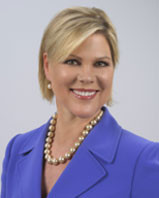Patients rule, doctors drool, for an evening
Super patients share their stories at Brown
PROVIDENCE – Why was this night different from all other nights? On this night, the patients had the stage, and the doctors and health care professionals were in the audience, listening attentively.
The captive audience on Dec. 8 included many of Brown University’s inaugural class of its Executive Master of Healthcare Leadership, which, along with Brown University School of Professional Studies, was hosting the public event.
The session, billed as “How super patients activate their super powers,” featured three patient leaders and self-proclaimed superstars.
They included: Dave deBronkart, known as e-Patient Dave, who survived Stage 4 renal cell carcinoma, thanks to a supportive online community; Kerri Sparling, a diabetes advocate who regularly blogs at Six Until Me; and Pat Mastors, former TV reporter who is developing a new online organization for patient advocacy and engagement.
Each had their own compelling story to tell of how the ability to engage with an online community of patients had helped them to overcome the inertia of “the doctor knows best” medical care.
e-Patient Dave
For deBronkart, the moral of his story was clear: “Patient-centered care demands that we listen to patients. Because of the web, patients can connect.”
After complaining of shoulder pain, deBronkart had been diagnosed with Stage 4 cancer that had metastasized. He was told by his doctors that the median survival time was 24 weeks.
Doing research online about the disease, deBronkart found an online patient community that shared with him the information that saved his life: there was an experimental treatment, find a hospital near you that does lots of cases. Further, the online patient community gave him details about the difficult side effects of the treatment and how to cope with them.
In dramatic fashion, deBronkart shared his survival story, including photos of his daughter’s wedding and the birth of his first grandchild, events he said had been made possible through his online patient community.
In response, deBronkart now travels across the country, delivering his message to audiences and using social media to mobilize patients.
Diabetes advocate
With the skill of a TED presenter, Kerri Sparling walked the audience through her life story, told with self-deprecating humor and honesty, detailing her 28-year struggles with Type 1 diabetes since her diagnosis as a child when she was six.
Sparling’s directness contrasted with deBronkart’s salesmanship: she showed her attached insulin pump, she talked about the constancy of staying on top of her blood sugar levels, and she documented her experiences as a child growing up, and the psycho-social burden, even as a mother of a young child who worried what the other mothers were thinking as she guzzled her child’s juice box, to prevent her from crashing from low blood sugar.
Her blog, Six Until Me, is a way to share her experiences as a way to give herself and others who cope with Type 1 diabetes a seal of approval for who they are and what they do.
Network of patient voices
For Pat Mastors, a former well-known TV news reporter in the Rhode Island market, her evolution as a patient advocate began with the death of her father following the alleged acquisition of an infection during an operation at a hospital.
Mastors touched on this story very briefly, with few details, before moving on to what happened with her daughter when she was struck with a mysterious ailment that turned out to be Guillain-Barre syndrome.
Once again, through online connections, the mysterious ailment was properly diagnosed and treatment recommended.
Mastors became a super-vigilant advocate for her daughter, refusing to leave her side in the hospital, during which time she said she had “an amazing epiphany.”
Mastors realized that she had done everything she could for her daughter. What was needed was a way to develop a network of online patient advocates, to enable them to become respected as a stakeholders’ group.
Mastors is now the president and co-founder of the new nonprofit, The Patient Voice Institute, which she hopes will change the dynamic of the dance between patients and caregivers. Instead of being pushed around the dance floor, patients can become advocates, learning to take the lead in the conversation around their own health care.
In turn, Mastors envisions her new online portal becoming a kind of TripAdvisor for patients.
Honesty in dialogue
In response to a question from a doctor in the audience about communicating with patients, Sparling, in her direct, upfront style, admitted that: “A lot of times I lie to my doctor,” in response to whether she was exercising enough or following all the recommended advice she was give.
Not to tell the truth, Sparling said, was a very human attribute. By admitting she was lying, it “opened the door to be honest.”
Sparling’s blog, in many ways, was her attempt to be honest with herself.
Beyond patient advocacy groups
It was eye-opening, deBronkart said, to be attending a conference with doctors and watch as they rolled their eyes with disdain when the subject of patient advocates came up.
If there is a learning health care system, he continued, you [place value] on what the patient says as important.








